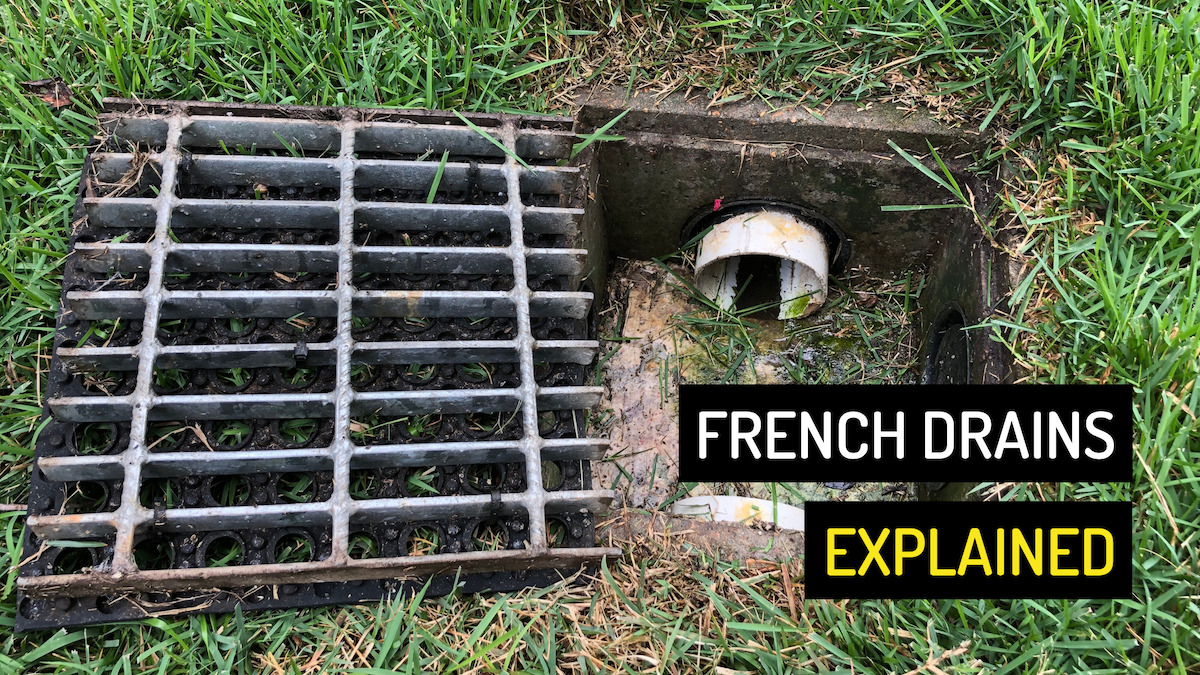A French drain can help protect you from water damage, but which type should you install
Improper drainage is a common problem for homeowners.
Standing water around your home attracts pests like mosquitos, encourages the growth of mold and mildew, and can cause issues with your foundation. These are only a few of the problems that can occur without adequate drainage.
To ensure excess water drains properly, away from your home a common solution is to have French drains installed.
Not sure what a French drain is or what type is best for your property, here’s what you should know.
Table of Contents
Brief Definition of French Drains
A Frech drain is a pipe, often perforated, running through a trench. The trench collects and diverts excess water away from your house. French drains are often covered with a filter and pea gravel to keep dirt and debris from clogging the drain.
When you have French drain installed, it is typically placed along the foundation to prevent water from seeping into basements and crawlspaces.
There are two types of French drains and each has its advantages and downsides.
Interior French Drain
An interior French drain runs along the home’s foundation. Drain pipes are installed to divert water to a sump pump. The pump pushes the water outside.
Interior French drains are more expensive to install than your other option. After having the French drain installed, you rarely need to worry about maintenance. Since the drain runs through the foundation, clogs from leaves and debris are rarely a problem.
Some of the downsides include removing sections of your basement floor to install the drain. If you have a crawl space, only dirt is removed so it may not be a major downside.
Interior French drains are also less effective and this can be an issue in areas with heavy rainfall.
Exterior French Drains
Exterior French drains are less expensive than interior ones. However, exterior Frech drains are also more effective at catching and diverting excess water.
The drains do not use sump pumps, which costs down installation costs. Instead, exterior French drains rely on gravity to push water away from the house.
Exterior French drains are installed along the perimeter of the foundation and are visible. Adding pea gravel not only prevents clogs but also adds a decorative touch to the trench.
The primary drawback to having an exterior French drain installed is the cost. While the piping is less expensive than interior French drain pipes, you also need to factor in labor costs. Exterior French drain trenches are often 8 feet deep. This requires the use of machinery.
Choosing the Right French Drain
If heavy rainfalls are rare in your area, an interior French drain may be a good option. However, remember your floor will be temporarily removed. Areas with heavy annual rainfall will probably want to go with an exterior French drain, but this can also depend on your budget. Whichever type of drain you choose, both will help prevent water from leaking into your house.





